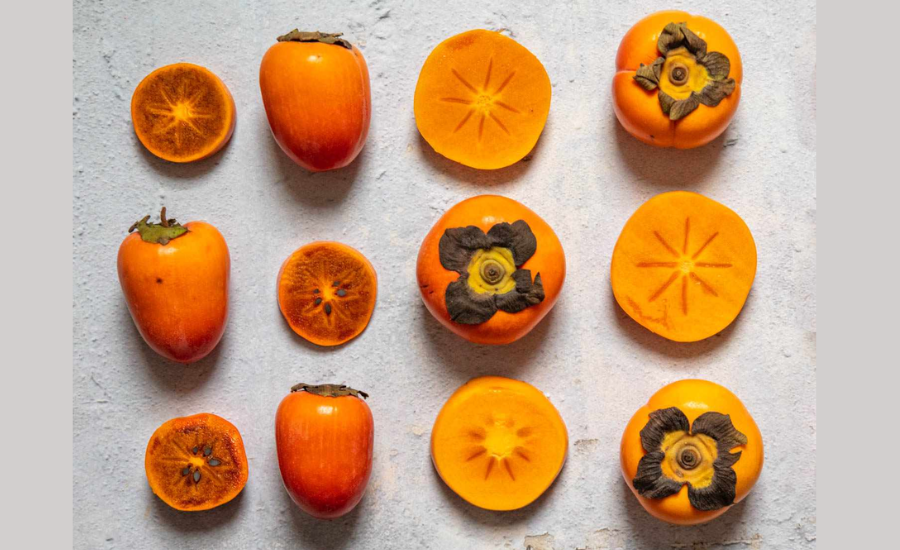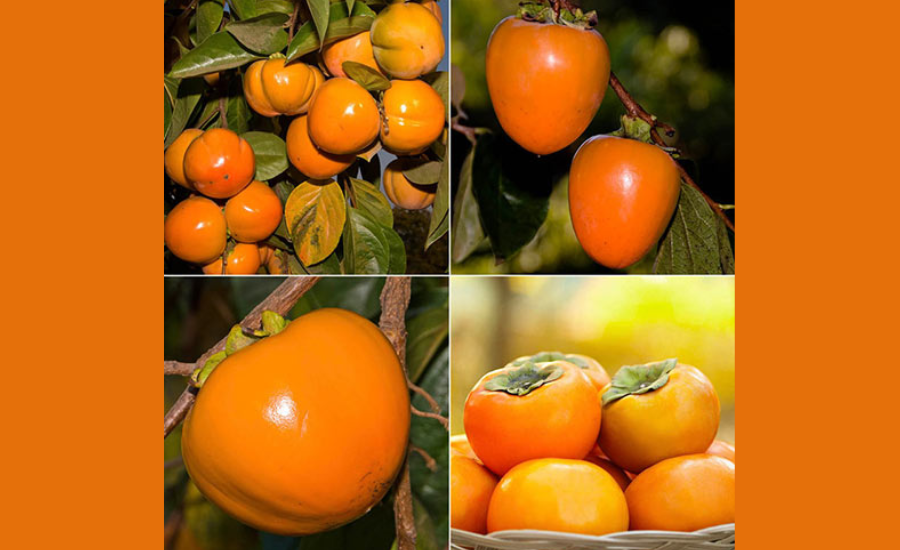Understanding the Whopper Persimmon Tree Fruit: Key Qualities and Benefits
The Whopper Persimmon Tree Fruit, also known for its genus Diospyros, is celebrated for its impressive size, often reaching up to a pound per fruit, and its intense honey-like sweetness. This cultivar appeals to both backyard gardeners and commercial growers alike, thanks to its high yield and adaptability across different climates. The fruit’s delicate flavor pairs well with a variety of culinary applications, from raw consumption to recipes that highlight its sweetness. Not only does this tree provide a bountiful harvest, but it also enhances garden aesthetics with its lush foliage and vibrant orange fruits that ripen beautifully in the autumn months. This guide provides everything you need to know to cultivate, care for, and make the most of this unique persimmon variety.
Exploring the Unique Qualities of the Whopper Persimmon Tree Fruit
Unlike other persimmons, the Whopper Persimmon stands out for its large size and luscious sweetness. The fruit has a thick, deep orange skin that protects its tender flesh, which is soft and creamy when fully ripe. Its texture and taste make it a favorite for both fresh eating and culinary preparation. The tree itself is also known for its resilience and attractive appearance, reaching heights of up to 15–20 feet and spreading a dense canopy of green leaves, which provide shade and privacy. The Whopper Persimmon’s large size and sweet flavor make it highly versatile—it can be eaten raw, cooked into jams or chutneys, or dried for preservation. For those seeking a productive fruiting tree that offers both visual appeal and edible rewards, the Whopper Persimmon is an excellent choice.

The Origins of the Whopper Persimmon Tree Fruit: Breeding for Size and Flavor
The Whopper Persimmon is a result of selective breeding aimed at enhancing the fruit’s size, sweetness, and adaptability. Historically, persimmons have been cultivated across Asia and North America, with the Asian varieties generally sweeter and the American varieties more astringent when unripe. The Whopper variety, developed through hybridization, brings the best of both worlds with its large fruit, rich taste, and relatively low astringency. In recent decades, it has gained popularity in the United States, particularly in regions where persimmons can thrive, such as the Southeast and parts of California. This cultivar has become especially popular for its capacity to thrive in USDA hardiness zones 5 through 9, offering a hardy and resilient option for growers across varied climates.
Benefits of Growing Whopper Persimmon Tree Fruit in Your Garden
The Whopper Persimmon Tree Fruit presents multiple benefits for gardeners. With its adaptability to a wide range of USDA hardiness zones, from 5 to 9, it’s suited for various climates and soil types. This tree is known for its drought tolerance and resilience to common pests, reducing the need for chemical treatments. Additionally, the fruit offers nutritional benefits, being rich in vitamins A and C, potassium, and dietary fiber, making it a valuable addition to a healthy diet. The tree is a low-maintenance choice, which appeals to both novice gardeners and seasoned horticulturists. Moreover, it enhances the biodiversity of a garden, providing a habitat for beneficial insects and pollinators while rewarding growers with an annual yield of sweet, nutritious fruit.
Step-by-Step Guide to Planting Whopper Persimmon Tree Fruit for Optimal Growth

For successful growth, plant the Whopper Persimmon Tree Fruit in early spring or fall to give it a strong start before extreme weather. Begin by selecting a site with full sun exposure, where the tree will receive at least six hours of sunlight daily. The soil should be well-drained with a pH between 6.0 and 7.5; if the soil is too acidic, consider adding lime to adjust the pH. After placing the tree, backfill with soil, gently tamp it down, and water thoroughly to eliminate air pockets. For best results, apply a 2–3-inch layer of mulch around the base, which will help retain moisture and suppress weed growth as the tree establishes itself.
Essential Care Tips for a Thriving Whopper Persimmon Tree Fruit
After planting, the Whopper Persimmon Tree requires minimal upkeep, though regular watering, especially in the first two years, is essential. Established trees tolerate some drought but still appreciate deep watering during extended dry spells to maintain fruit quality. Mulching is beneficial for moisture retention and temperature control, especially in hot climates. Fertilize young trees in the early spring with a balanced 10-10-10 fertilizer to support growth; however, as the tree matures, reduce fertilization to avoid excessive foliage growth at the expense of fruit production. Pruning in late winter or early spring is also recommended, removing any dead or diseased branches to improve airflow and sunlight penetration, enhancing the tree’s fruiting capacity.
Harvesting Whopper Persimmon Tree Fruit: Timing and Techniques
Typically, the Whopper Persimmon Tree Fruit ripens between late September and November. Look for a deep orange color and a slight softness, which indicates peak ripeness. For the best flavor, allow the fruit to ripen on the tree, as persimmons do not ripen as well after being picked. When harvesting, twist or snip the fruit from the branch carefully to prevent bruising, as the flesh is delicate. If you harvest fruits that are slightly under-ripe, they can be ripened off the tree by placing them in a cool, dry location, or stored in a sealed bag.
Culinary Uses of Whopper Persimmon Tree Fruit: From Sweet to Savory Dishes
Whopper Persimmons are a culinary delight, versatile in both sweet and savory applications. Their natural sweetness makes them perfect for raw enjoyment, as well as an addition to fruit salads or yogurt. In baking, the fruit’s rich flavor and texture enhance recipes for puddings, cakes, and muffins. Whopper Persimmons also work well in savory dishes, pairing excellently with cheeses, nuts, and hearty greens. Try incorporating them into chutneys, salsas, or even roasted with root vegetables. The fruit can also be dried to make persimmon chips or used in preserves for year-round enjoyment.
Managing Pests and Diseases in Whopper Persimmon Tree Fruit
Though relatively resistant to pests, Whopper Persimmon Trees can sometimes be affected by common pests such as persimmon psylla or aphids. Regular inspections help detect any early signs of infestation. Applying insecticidal soap or neem oil can effectively control minor pest issues. Fungal diseases, including leaf spot or anthracnose, can occur in humid environments. Prevent these by watering the base of the tree to keep foliage dry and promoting good air circulation by pruning dense growth. In areas where disease is common, consider using fungicides as a preventive measure during the growing season.

Enjoying the Benefits of Whopper Persimmon Tree Fruit
The Whopper Persimmon Tree Fruit is a worthwhile investment for anyone looking to enrich their garden with a tree that offers beauty, resilience, and a rewarding harvest. Whether your goal is to enjoy fresh, homegrown fruit, enhance your culinary creations, or simply add a visually striking plant to your landscape, the Whopper Persimmon delivers. With proper care and maintenance, you’ll enjoy bountiful harvests year after year. Cultivating this unique persimmon tree not only provides fresh produce but also brings a sustainable, natural beauty to your garden or orchard.
FAQs about Whopper Persimmon Tree Fruit
Q: What makes the Whopper Persimmon different from other persimmons?
A: The Whopper Persimmon stands out for its impressive size, often weighing up to a pound, and its sweet, honey-like flavor. Unlike some other varieties, it has low astringency and can be enjoyed fresh when fully ripe.
Q: What climate zones are best for growing Whopper Persimmons?
A: Whopper Persimmons grow well in USDA hardiness zones 5 through 9, making them suitable for a range of climates from moderate to warmer regions.
Q: How long does it take for a Whopper Persimmon Tree to bear fruit?
A: Typically, a Whopper Persimmon Tree takes around 3–4 years to start bearing fruit, with optimal production after 5–6 years.
Q: Do Whopper Persimmons require a second tree for pollination?
A: While the Whopper Persimmon is self-pollinating, planting a second persimmon tree nearby can increase fruit yield.
Q: How do I know when the fruit is ready to harvest?
A: The fruit ripens between September and November. When it turns a deep orange color and feels slightly soft to the touch, it’s ready for harvesting.
Q: Can I grow Whopper Persimmons in containers?
A: Yes, they can be grown in large containers with adequate drainage, but expect them to grow smaller and potentially yield less fruit compared to trees planted in the ground.
Q: How can I protect my Whopper Persimmon Tree from pests and diseases?
A: Regular inspection, pruning, and occasional use of neem oil or insecticidal soap can help manage common pests. Avoiding overhead watering and maintaining good airflow can prevent fungal diseases.
Q: What are some popular ways to use Whopper Persimmons in cooking?
A: Whopper Persimmons are versatile in the kitchen. They can be enjoyed fresh, in salads, as part of desserts like puddings and cakes, or in savory dishes with cheeses and meats. They can also be dried, preserved, or used in chutneys and sauces.
Conclusion
The Whopper Persimmon Tree Fruit is a highly rewarding cultivar known for its large, sweet fruits and adaptability. Ideal for USDA zones 5 to 9, this tree brings visual beauty to any garden while offering a substantial harvest each fall. From selecting the right planting site and ensuring proper care to exploring the wide range of culinary uses, growing the Whopper Persimmon provides fresh, flavorful fruit and enhances garden aesthetics. With minimal maintenance and high resilience against pests, the Whopper Persimmon Tree is an excellent addition for home gardeners and orchard enthusiasts seeking a robust, fruitful tree.
Read Next: d15ball-honda






